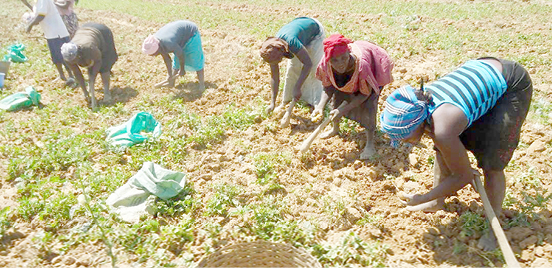55,000 farmers, herders get water access in Borno, Adamawa, Yobe
The Catholic Relief Services (CRS), with the support of USAID, has delivered water infrastructure to about 55,000 farmers and herders in Adamawa, Borno and Yobe states. The CRS country representative, Paul Townsend, who disclosed this Friday during a Water for Agriculture Closeout and Dissemination event in Abuja, said CRS realised the activities through Water for […]

Female farmers
The Catholic Relief Services (CRS), with the support of USAID, has delivered water infrastructure to about 55,000 farmers and herders in Adamawa, Borno and Yobe states.
The CRS country representative, Paul Townsend, who disclosed this Friday during a Water for Agriculture Closeout and Dissemination event in Abuja, said CRS realised the activities through Water for Agriculture Activity (WFA) in the three states.
Over the four years of implementation, the activity also increased access to water for almost water for agriculture trained over 1,600 farmers to adopt improved agriculture practices.
He said, “In the zones targeted by the WFA Activity, improved access to irrigation has led to increased yields for farmer, improvements in income for both herders and farmers, and has opened opportunities to strengthen the entire food system (through the extended farming season and investments in new value chains, such as fish and other).
“We have also seen promising signs of improved social cohesion. And I believe that this is the “glue” that will hold things together and will help ensure sustainability of our investments.
“We know that climate change is threatening the gains in agriculture but see opportunity to strengthen our collective action and to continue investing in community resilience and the shared use of natural resources.”
The USAID Nigeria director of the Office of Economic Growth and Environment, Michelle Corzine, noted that through its WFA Activity implemented by CRS, they addressed some of the challenges associated with the negative impacts of climate change on agriculture and water availability by increasing access to water for smallholder farmers and livestock herders and management of water resources.
